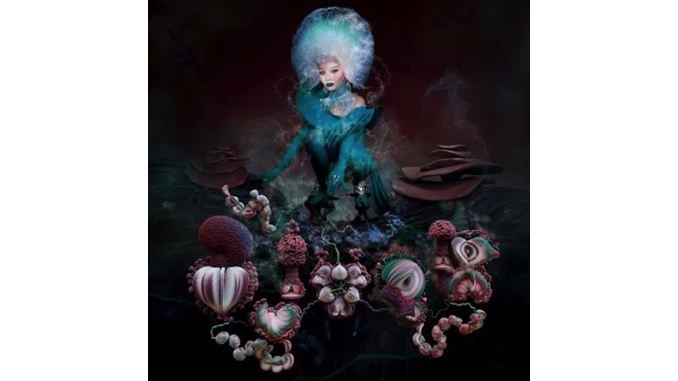Björk’s Fossora Is a Dense, Challenging Experiment with Occasional Missteps
On the Icelandic icon’s 10th album, intricately arranged songs of grief and love initially come off imposing, but gradually build a fascinating world

Over her 30-year career, Björk’s volcanic beats, delightfully peculiar voice, thick layers of naturalistic imagery and whimsical dresses, masks and visuals have served as a front for up-close-and-personal glimpses into her life. You can feel the unparalleled Icelandic pop and electronic experimenter’s fascination with, and need for, other people in both her most spacious and bombastic recordings. Her 2017 album, Utopia, was especially remarkable since the then-52-year-old sounded like she was experiencing love for the first time. Following her difficult split with her longtime partner—who was the focus of 2001’s wintry, sensuous Vespertine and 2015’s gutting breakup album Vulnicura—she embraced new love with airy flutes, birdsong and feminist calls for unity.
In the years afterward, life tested some of her strongest connections. Her mother, the Icelandic activist Hildur Rúna Hauksdóttir, lost her battle with a long-term illness unexpectedly early. As the pandemic hit, she left New York to return to Iceland full-time. Her daughter reached adult age and moved out. If Utopia’s birdsong and flutes represented the featherlight ecstasy of infatuation, then the fungal imagery and bass clarinets of follow-up Fossora—a phrase derived from the Latin word for “she who digs”—symbolize Björk planting herself firmly in the ground, doing her best to hold herself together amid the changes.
Like a mushroom, Fossora arrives with an outer layer of dirt worth scrubbing away to get to the delights inside. The album’s often-baritone sound at first veils it in a muddy shroud: Modulated vocals sometimes substitute for percussion or bass, which can make for a disorienting listen. At other times, bass clarinet—a first-time instrument for Björk, known for building albums from new instruments—appears where you might expect higher-pitched orchestration. It sounds stern and miry, which is surprising since Björk has described the album’s music and mushroom imagery as fun, introducing a disconnect. But the handful of songs that detour from this palette and incorporate the hard techno subgenre gabber—courtesy of contributions from Indonesian duo Gabber Modus Operandi—are immediately a huge joy.
These more visceral tracks initially put up some barriers to understanding the more unorthodox ones. The more time you spend with Fossora, though, the more all the instruments feel logically placed within even Björk’s most out-there soundscapes. The murky low end slowly releases its grip from the brighter high end, peeling back each layer of the intricate arrangements, which often twist multiple vocalists and string or woodwind players into unusual shapes. Fossora is a dense, challenging experiment that gradually coheres into an immersive and sometimes unsettling experience, with occasional missteps along the way.
The album’s mushroom throughline manifests primarily in lyrics about digging roots. (There’s also a brief, gyrating electronic instrumental named “Mycelia,” the term for mushroom roots.) On the title track, as thumping bass and squawking programming descend into thrilling gabber abrasion, Björk sings of nerves that spread “at mycelium speed” and how digging into the soil “Dissolves old pain dug down to rot / Decomposes / Debris degrades.” It’s a moving metaphor for how finding firm ground can stabilize you in times of grief and reconnect you with those you’ve lost. “Sorrowful Soil,” which gorgeously evokes 2004’s vocals-only behemoth Medúlla, traffics in similar language as Björk eulogizes Hildur Rúna: “Into sorrowful soil, our roots are dug.” She’s surrounding herself with her grief in hopes of finding stability.
-

-

-

-

-

-

-

-

-

-

-

-

-

-

-

-

-

-

-

-

-

-

-

-

-

-

-

-

-

-

-

-

-

-

-

-

-

-

-

-








































